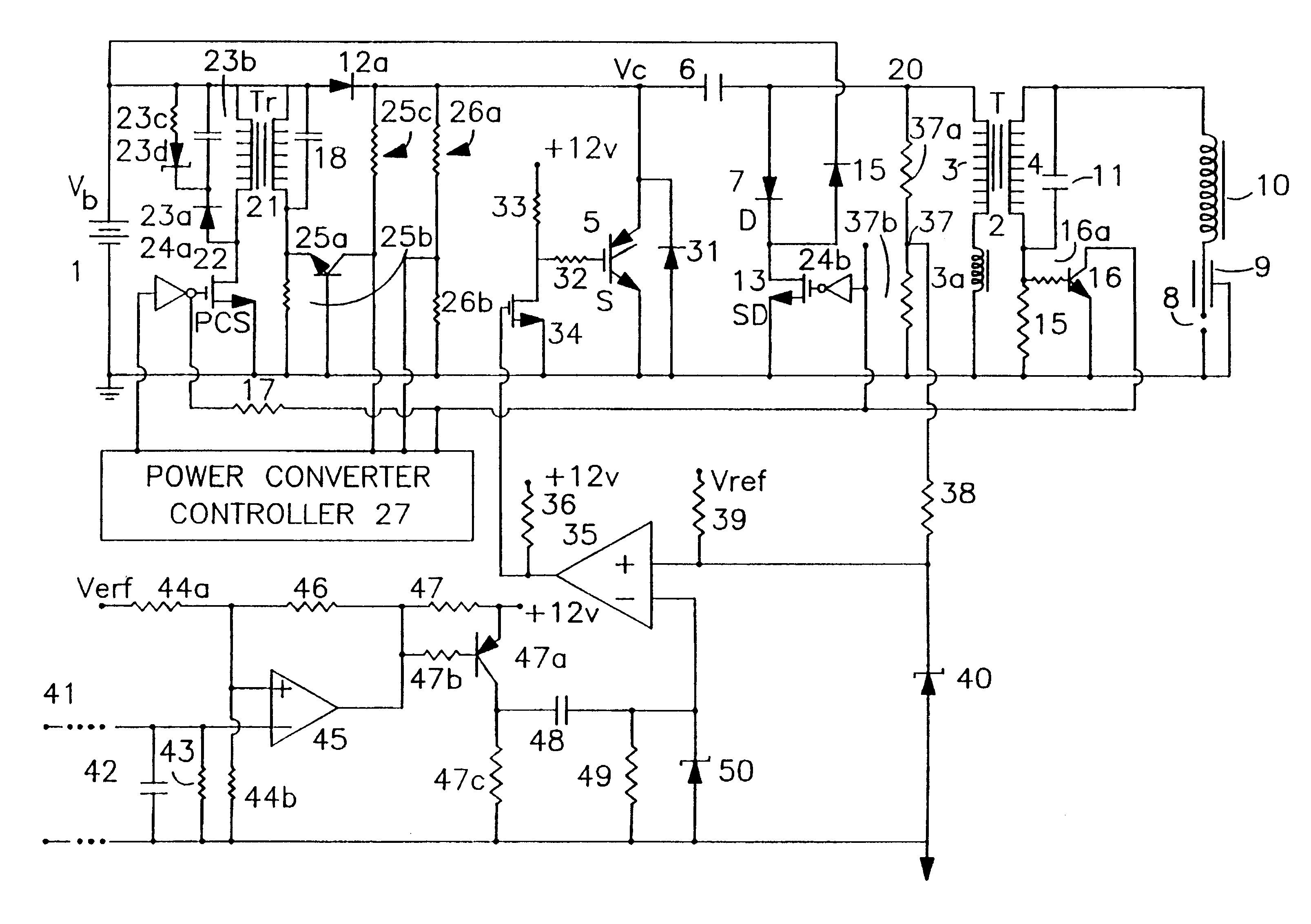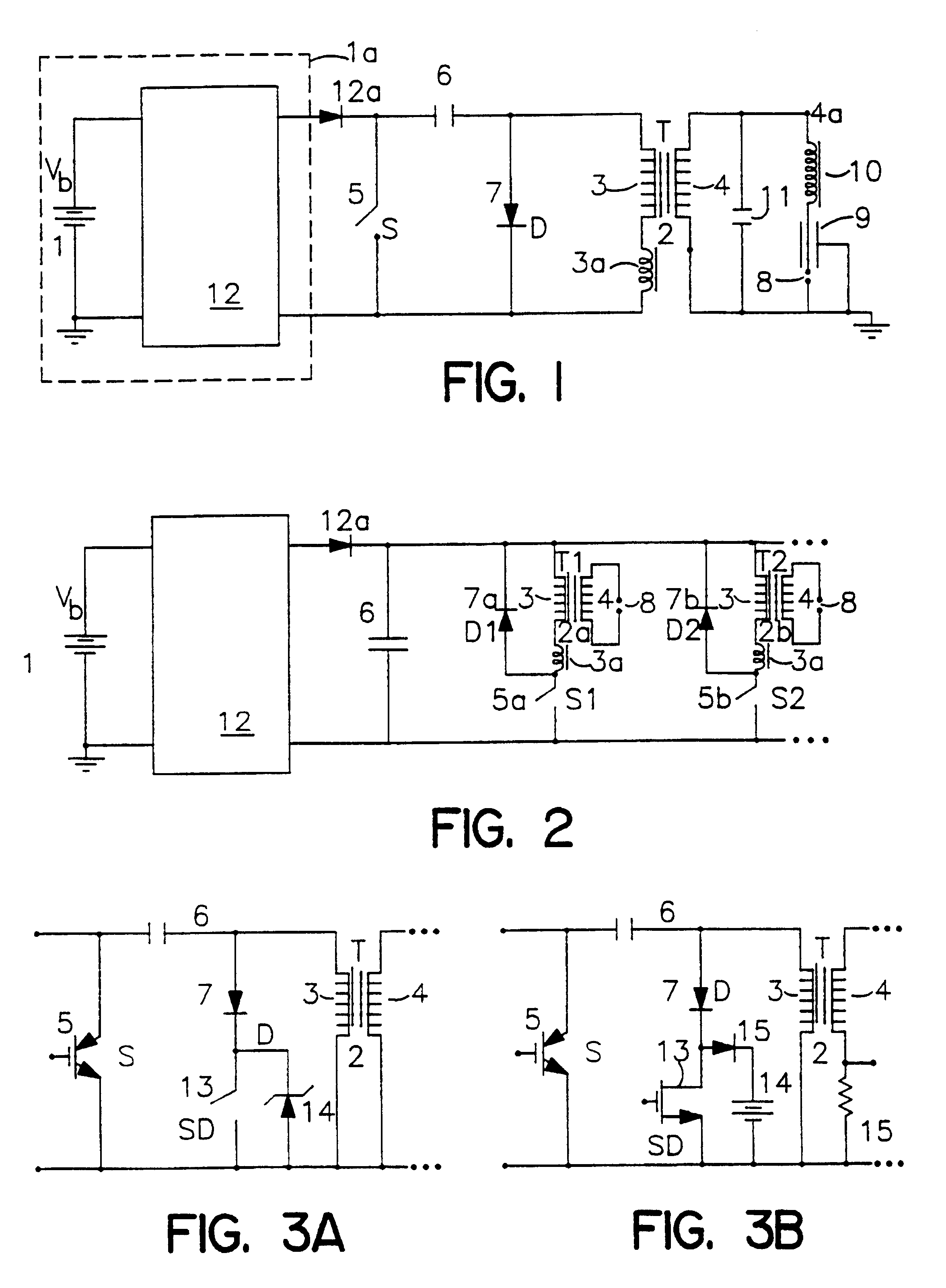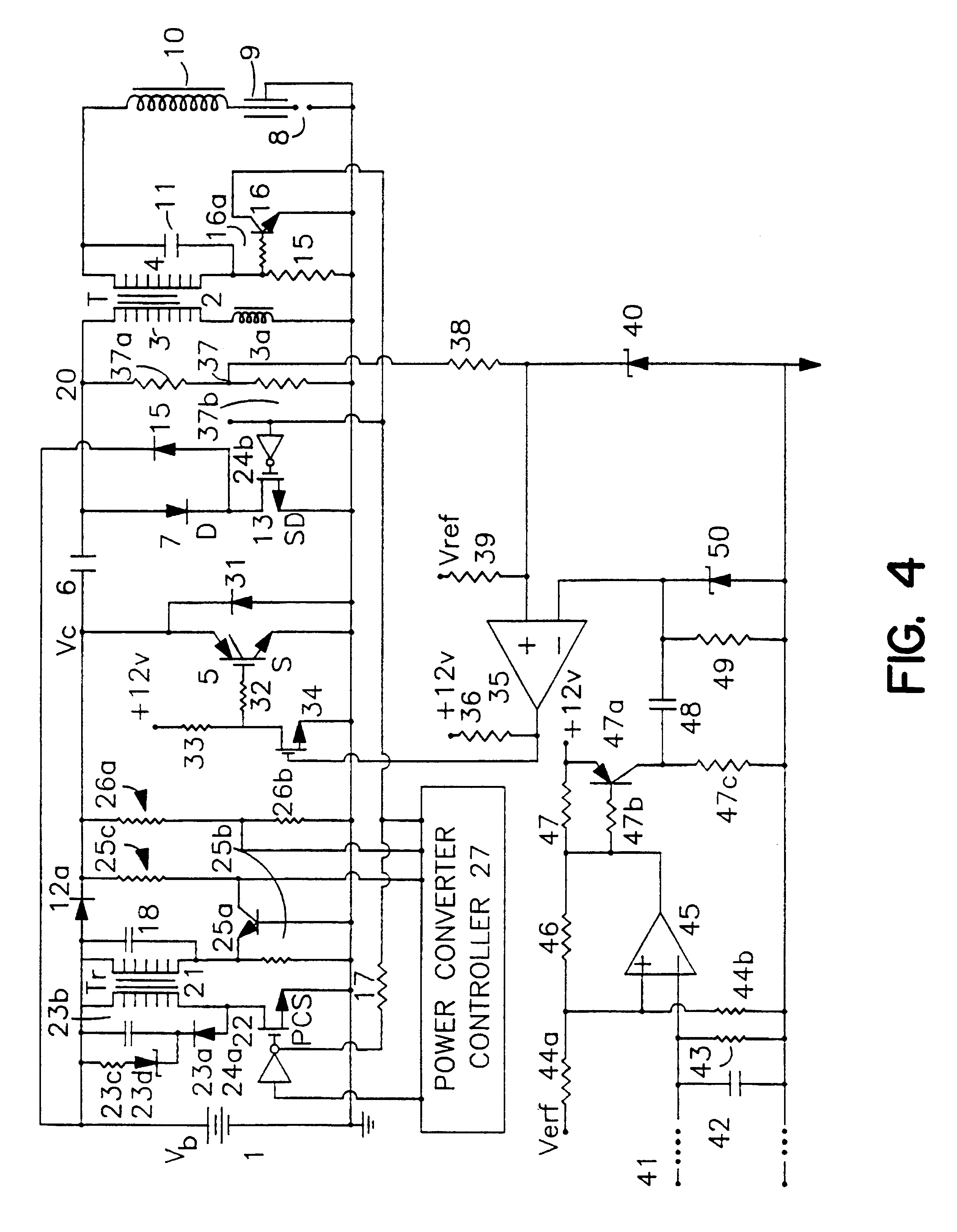High efficiency high energy firing rate CD ignition
a high energy firing rate, high efficiency technology, applied in the direction of machines/engines, induction energy storage installations, other installations, etc., can solve the problems of slow recharging of discharge capacitors to a potentially lower energy and peak voltage, inefficient current capacitive discharge ignition systems, and high efficiency
- Summary
- Abstract
- Description
- Claims
- Application Information
AI Technical Summary
Benefits of technology
Problems solved by technology
Method used
Image
Examples
Embodiment Construction
FIG. 1 is a partial block, partial circuit diagram of a topology II, CD, single coil distributor type ignition circuit, powered by a car battery 1 (voltage Vb) with ignition coil 2 (T) with primary winding 3 of turns Np and inductance Lp and coil primary leakage inductance Lpe (shown as an external inductor 3a in this figure), and secondary winding 4 of inductance Ls, with the windings 3 and 4 wound on a magnetic core. The ignition discharge circuit is fired by means of main switch 5 (S) to partially discharge capacitor 6 of capacitance Cp through current flow Ip through switch S and through the coil 2 primary winding 3, with current Ip flowing through the shunt diode D (7) upon switch S opening to produce a triangular spark current in spark gap 8 of a spark plug 9 with capacitance Cp1 either built into the spark plug or contained in a capacitive spark plug boot. Preferably, low resistance inductive spark plug wire 10 is used to suppress the capacitive spark associated with the seco...
PUM
 Login to View More
Login to View More Abstract
Description
Claims
Application Information
 Login to View More
Login to View More - R&D
- Intellectual Property
- Life Sciences
- Materials
- Tech Scout
- Unparalleled Data Quality
- Higher Quality Content
- 60% Fewer Hallucinations
Browse by: Latest US Patents, China's latest patents, Technical Efficacy Thesaurus, Application Domain, Technology Topic, Popular Technical Reports.
© 2025 PatSnap. All rights reserved.Legal|Privacy policy|Modern Slavery Act Transparency Statement|Sitemap|About US| Contact US: help@patsnap.com



